
Tjolöholm is a castle in Tudor style. It was built between 1898 and 1904 by James Fredrik and Blanche Dickson, the castle is a bastion of faithfulness to traditional methods of manufacturing. Predominantly in Tudor style, the castle also boasts rare examples of Liberty & Co who were at the forefront of the Arts and Crafts Movement at the time. Modernities from the turn of the century such as electricity, central heating and a circularly flowing shower were combined to make this castle truly unique.


Castle & Garden
The castle’s architect Lars Israel Wahlman not only designed the castle, but also the surrounding parkland and Arts and Crafts style garden. The garden nearest the castle is noticeably more formal and structured than the rest. As the garden extends further from the castle, the more it gradually adjusts to the countryside giving the impression that the castle seems to grow out of its surroundings.
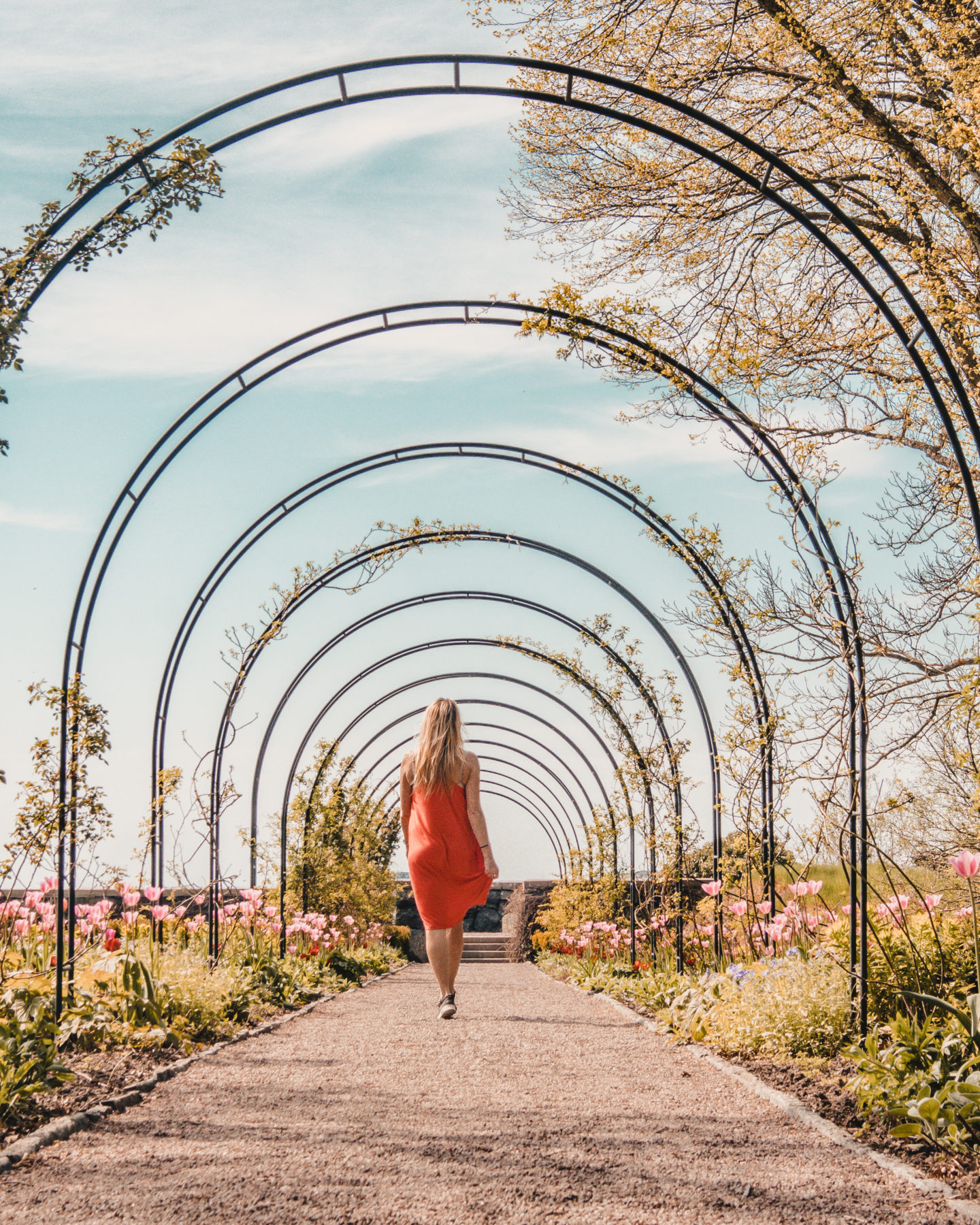
The castle garden’s history
After James Fredrik and Blanche Dickson bought Tjolöholm in 1892 they decided to tear down the existing manor house and erect a new castle. In 1897 a design competition was held and James Fredrik and Blanche selected the contribution that came second. The contribution was designed by a promising young architect by the name of Lars Israel Wahlman, only 27 years old. He called his design ”Hobgoblin”. In 1898 building work commenced and in 1904 it was completed.
Besides the castle, Lars Israel Wahlman also designed the surrounding parkland and gardens. It was unusual for contemporary Swedish architects like Wahlman to have an interest in landscape gardening as a crucial and integrated part of the design. He wanted to achieve harmony between natural countryside and the manmade garden, and he put all his heart and soul into his work. Wahlman drew inspiration from the strong trend at the time, the Arts and Crafts Movement, which was a reaction to mass produced big volume goods, and a desire to promote genuine craftsmanship, for both castle and garden. The early 20th century gardeners liked to use local plants to ensure quality and favour local growers. That also applied to craftsmanship – to make sure that work was done well, local labour was often hired to make furniture, walls and paths for the garden.
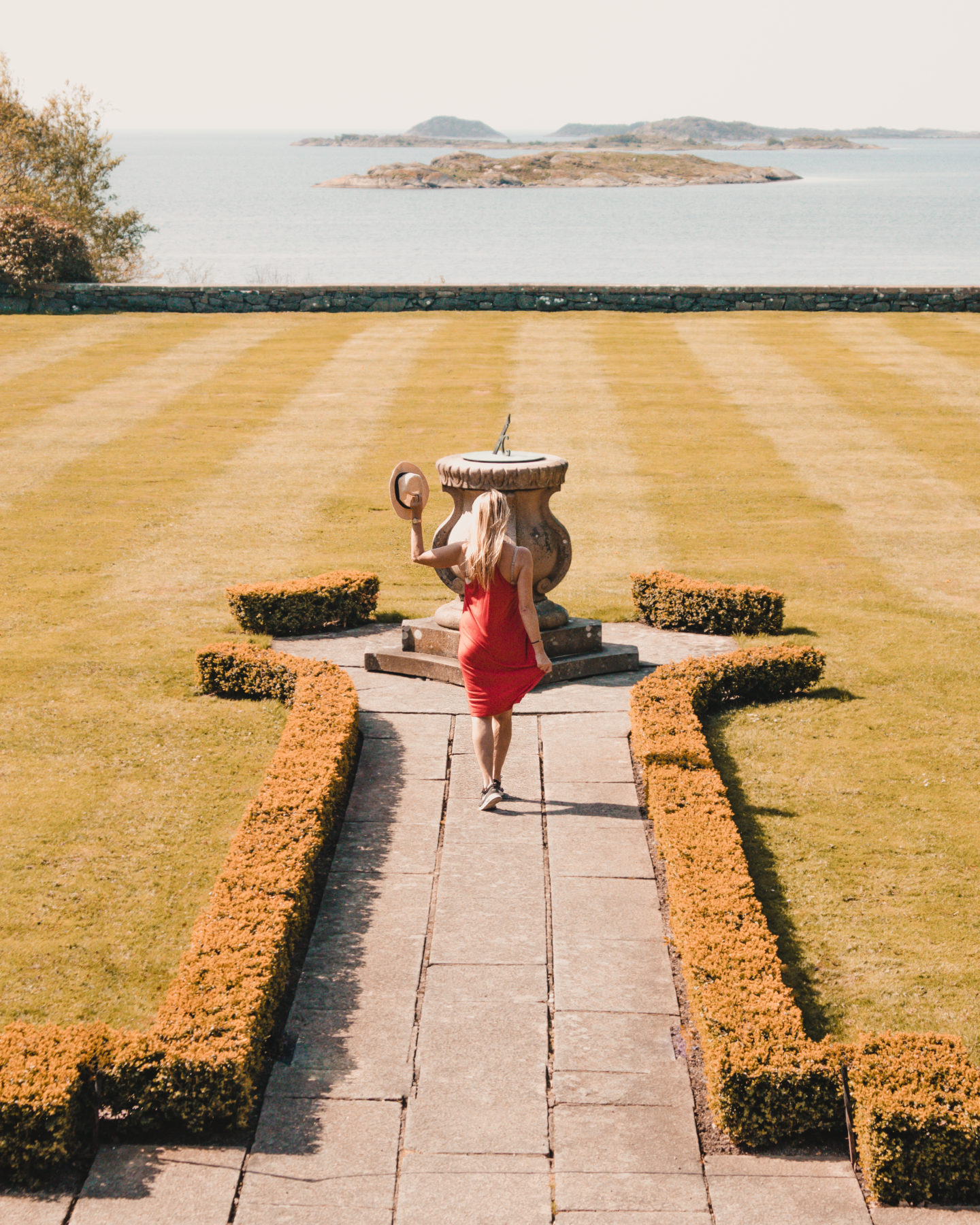
Arts and Craft was an inspiration for the Swedish national romantic. Wahlman had a clear national romantic style and he blended his impressions from the Swedish countryside with the British. He was particularly fond of Swedish log houses. He was inspired by the British house and landscape design and the Jugend style. This is how Wahlman describes what they wanted to achieve: ”The garden! It probably surprises you to find how much we have spent on the garden – that is not common in Sweden. But we wanted a small garden, a truly beautiful little fairyland, and as we did not have a magic wand that could make it appear for free, we had to do it through hard work and great effort.”
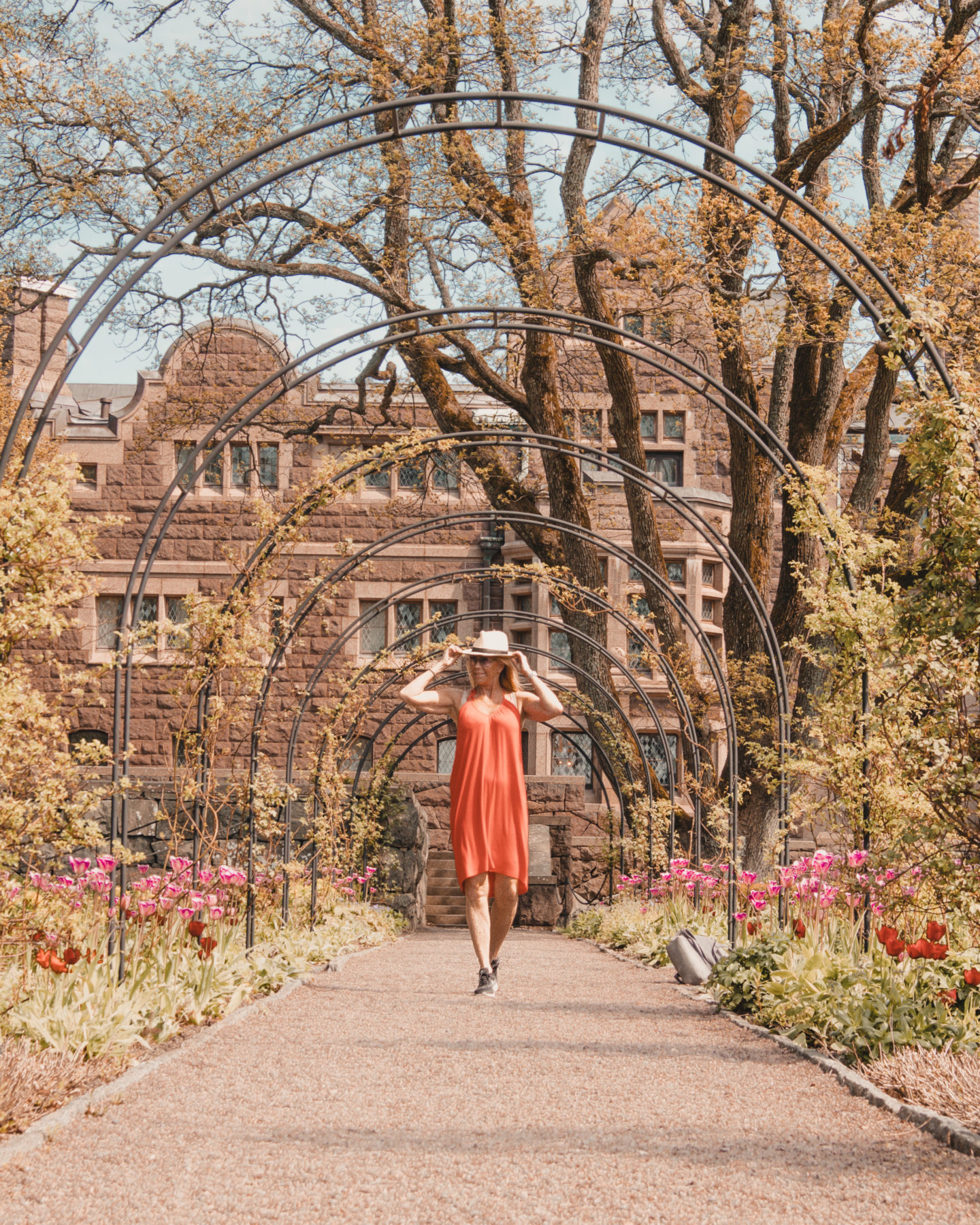
The history
‘It was like stepping into a fairytale, so completely different to anything I had ever seen before’ said the priest Gustaf Ankar on his first visit to Tjolöholm. The year was 1904, and the castle, church and worker’s village had just been completed. Blanche Dickson, widow of the wealthy businessman James Fredrik Dickson, lived in the magnificent castle. In six years she and the young architect Lars Israel Wahlman (1870– 1952) had created one of Sweden’s most remarkable buildings.
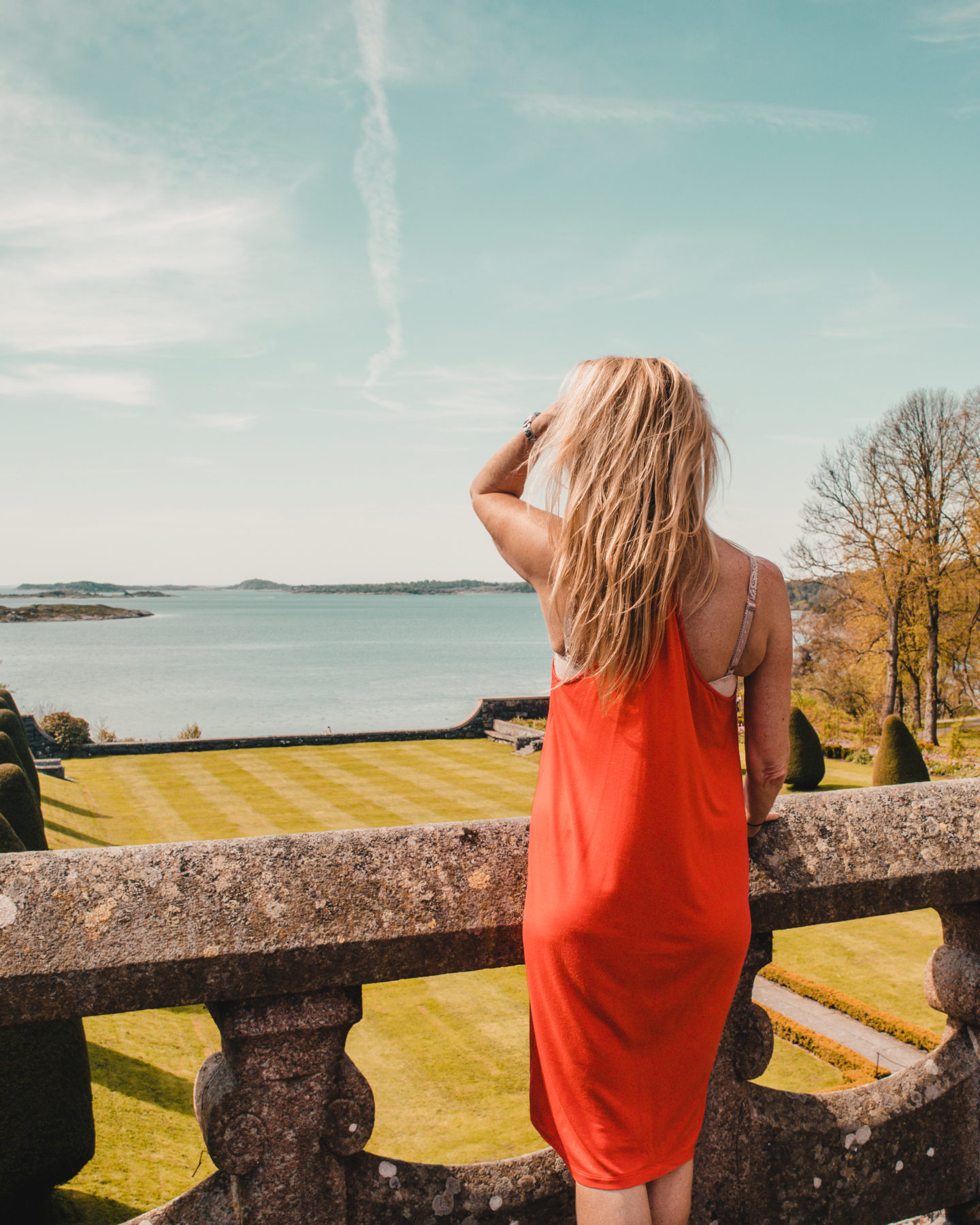
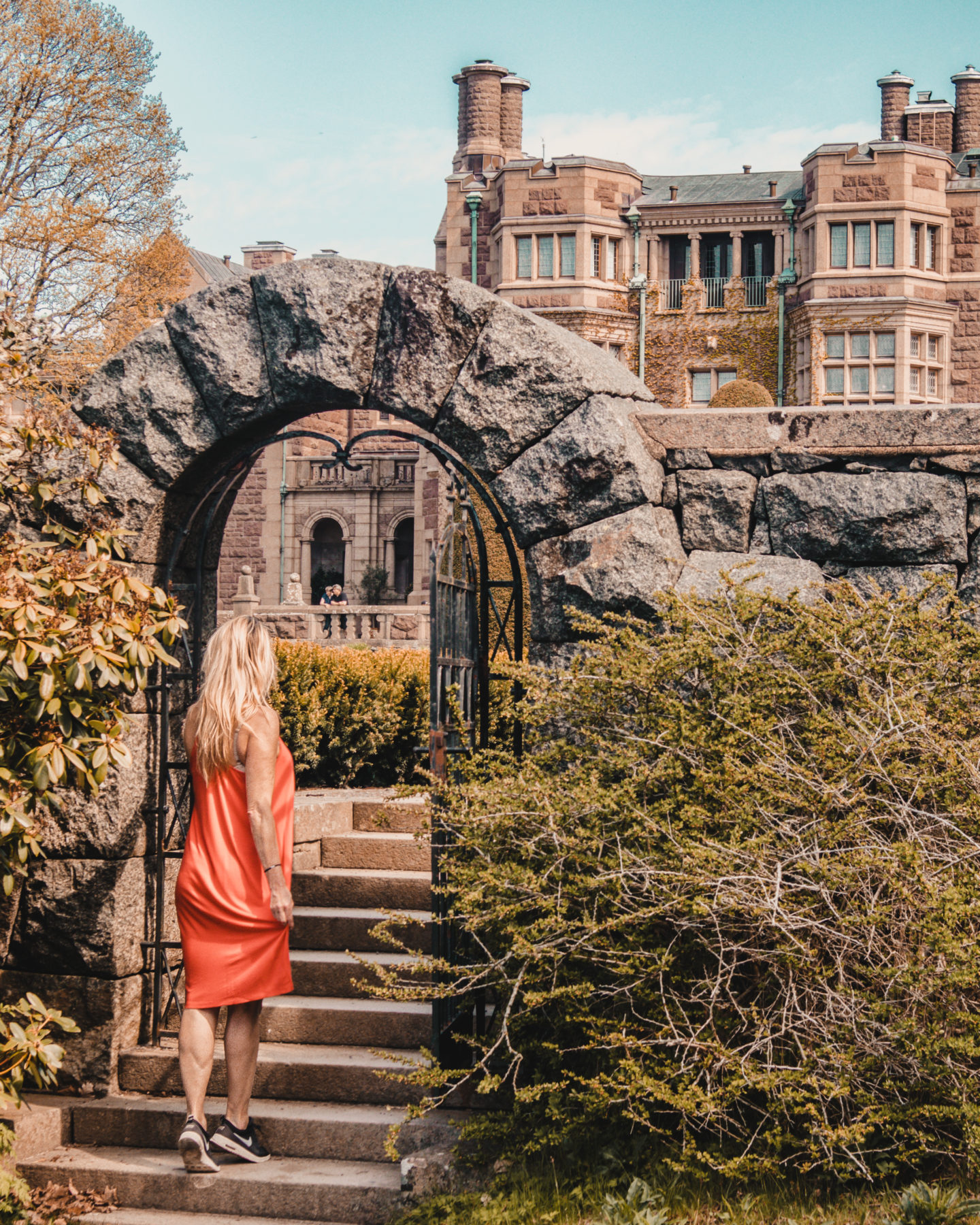
Scottish Ancestry
The Tjolöholm estate dates back to the 13th century, when it was mentioned in the Danish King Valdemar’s land registry. Through the following centuries it was owned by many distinguished families. In 1892 Tjolöholm was bought by James Fredrik and Blanche Dickson. There they created what was once the largest stud farm in Sweden, where they bred and reared renowned thoroughbreds. There was also a driving school, where future coachmen and drivers were educated.
When they bought the estate there was an existing manor, built in the Italian Renaissance style. It was only thirty years old but already in bad condition. In 1897 the Dicksons set up a competition for a design of an Elizabethan Castle. Wahlman’s entry ‘Hobgoblin’ came in second place, but it was he who received the commission. The majority of his inspiration came from the Arts and Crafts movement’s fondness for natural materials and high quality artisan handcrafts. Though Wahlman was clearly inspired by the British ideals he never actually visited Great Britain until 1900.
Shortly after the building work began James Fredrik Dickson passed away. He died of blood poisoning, which he had contracted by wrapping foil from a bottle of wine around a cut finger to stop the bleeding. Blanche Dickson continued the castle’s building work and in 1904 the castle was finished, and the old manor pulled down.
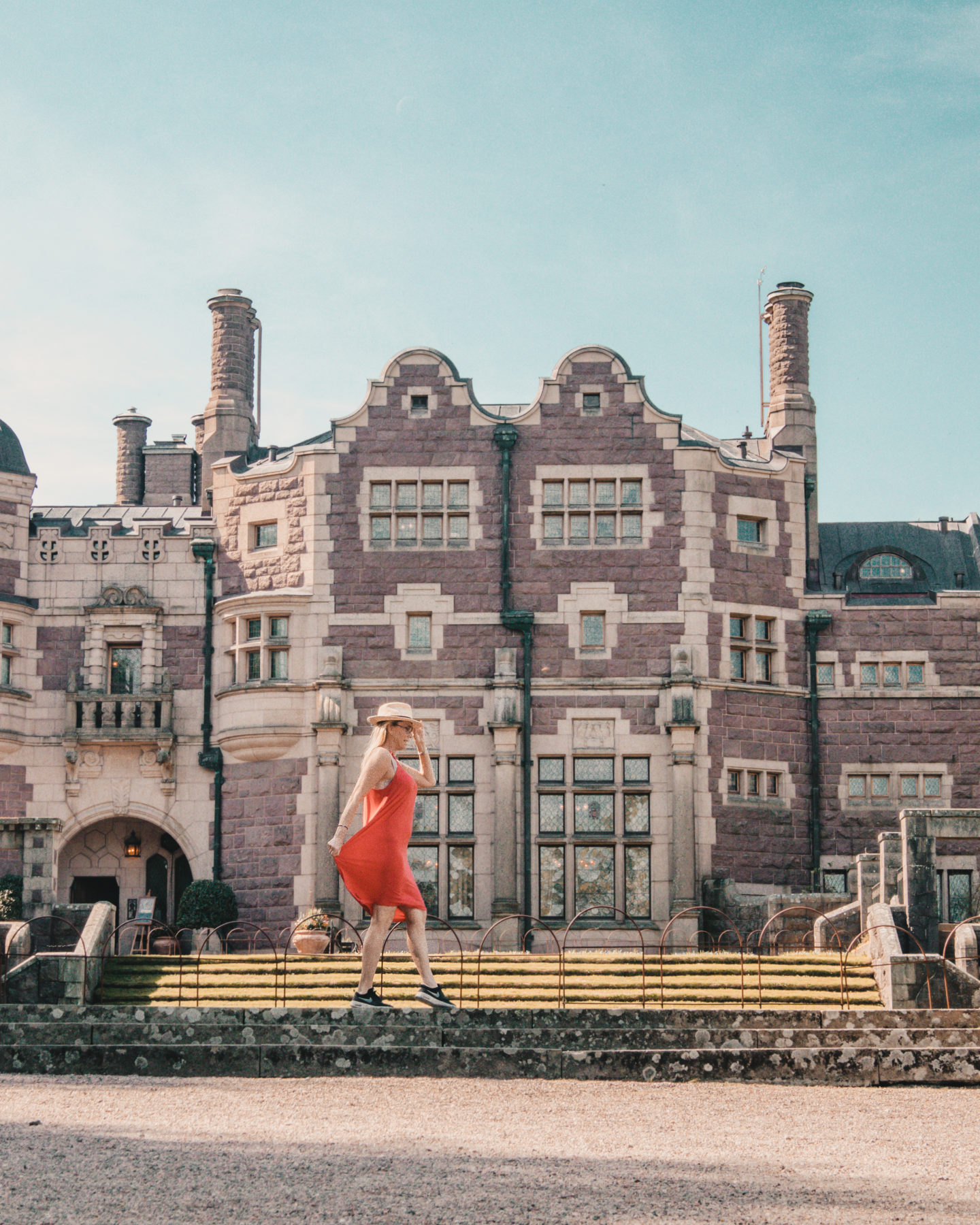
An Art Nouveau Castle
The castle’s building plan is creative and complex. The building is carefully divided in different sections for nobility, guests, children and servants. Both the interior and exterior of the castle are very detailed, and display a high level of quality handicraft. The Elizabethan façade has hints of Art Nouveau style, and the flowing lines and stylised flower and plant themes reoccur throughout the whole castle.
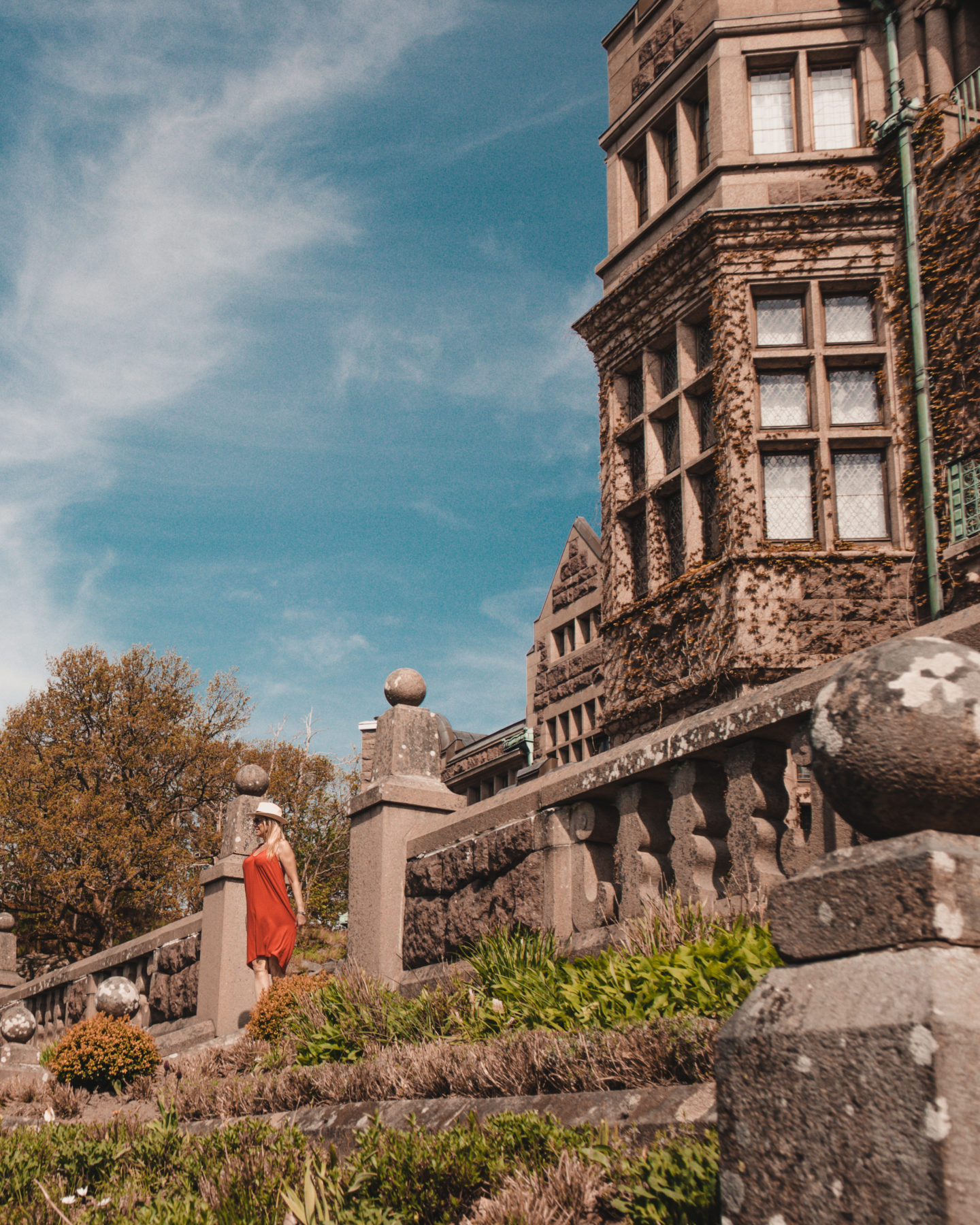

Beauty for everybody
Blanche Dickson also built a village with worker’s cottages in the National Romantic style. Her unquenchable ambitions turned the estate into a complete community. She built a castle church, and a town hall where the estate’s workers could meet. The estate evolved into one of Scandinavia’s leading Arts and Crafts properties.
In 1906 Blanche Dickson travelled to Ceylon to visit her brothers, who ran a tea plantation on the island. On the long boat journey home she contracted dysentery and died, in the middle of the Indian Ocean.
Tjolöholm was left to the couple’s daughter Blanche, and her husband, the Count Carl Bonde. The couple and their four sons lived on the estate until the pair separated in 1920. After the divorce Blanche Bonde spent her summers and weekends at Tjolöholm, and the winter months in Stockholm. In 1951 the Countess moved away from Tjolöholm for good. The castle stood unused, and deteriorated gradually. After her death the estate was bought by Gothenburg City Council, and was opened to the public. Since 1987 the castle has been part of a trust fund, with Kungsbacka municipality as the responsibly authority.
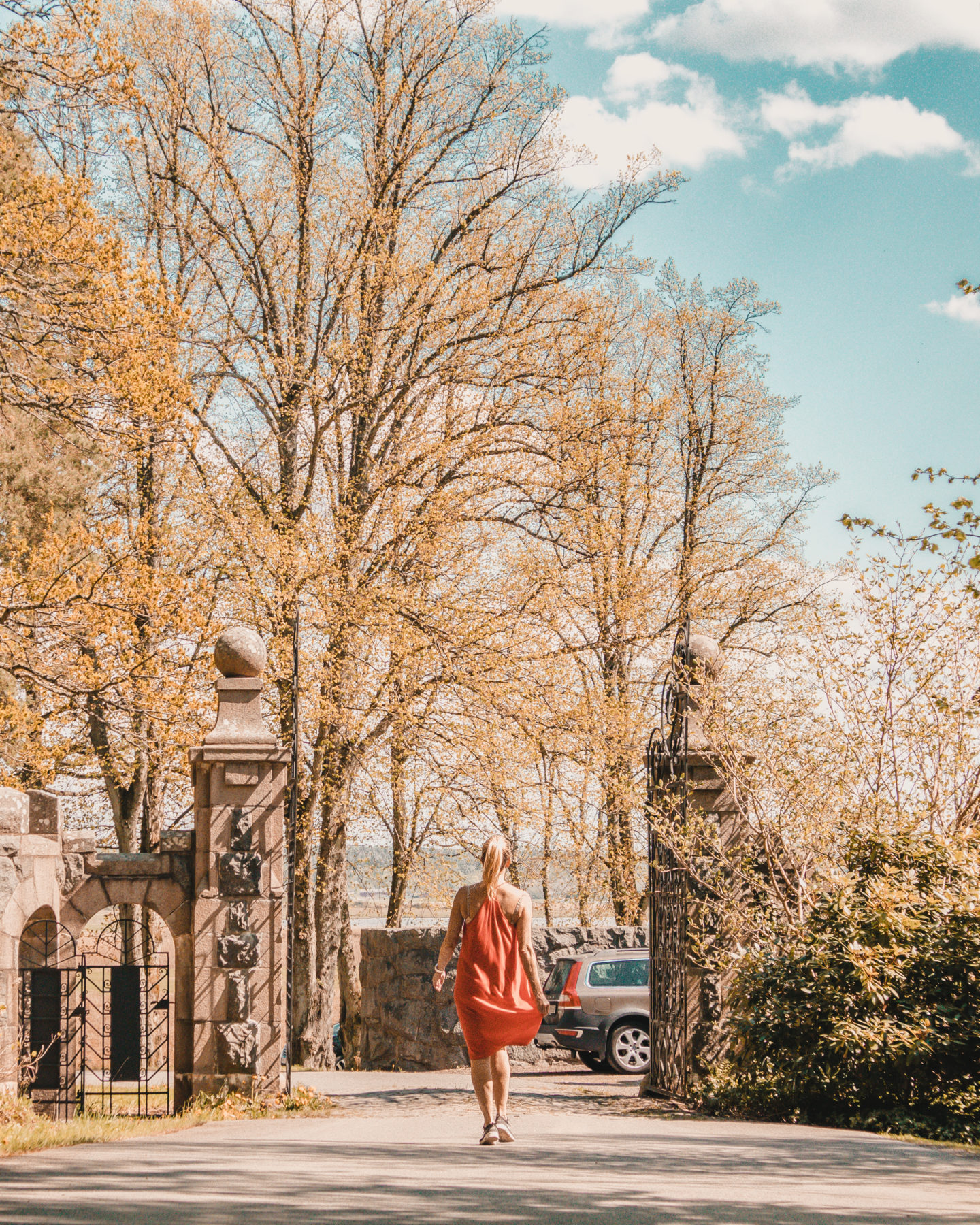
Accomodation
Tjolöholm offers accommodation for a night, weekend or week. You can even pre-book a romantic arrangement of flowers, chocolate, fruit and champagne to await your arrival. The picturesque gatehouse is Tjolöholms most exclusive suite, with an open fireplace and beautiful view over the surrounding coastal landscape. The apartment above the former village hall offers a large bathroom, with a luxurious wooden bathtub, where you can relax in a candle lit bath. The restored houses in the worker’s village have their own private gardens. They are decorated in genuine turn of the century style, with four-poster beds, a traditional Swedish tiled fireplace and ornamental wood-burning stove.

The Gatehouse
The recently refurbished gatehouse enjoys fantastic views over the coastline of Kungsbacka fjord. On the ground floor there is a modern kitchen, a sitting room with a dining area and open fireplace. Upstairs boasts a stylish double bedroom, decorated in Tjolöholm green with Arts and Crafts textiles by William Morris. There are two further sleeping places on the sofa bed downstairs and the modern bathroom includes a luxurious bath. In the morning a fine Swedish breakfast awaits you in the kitchen.
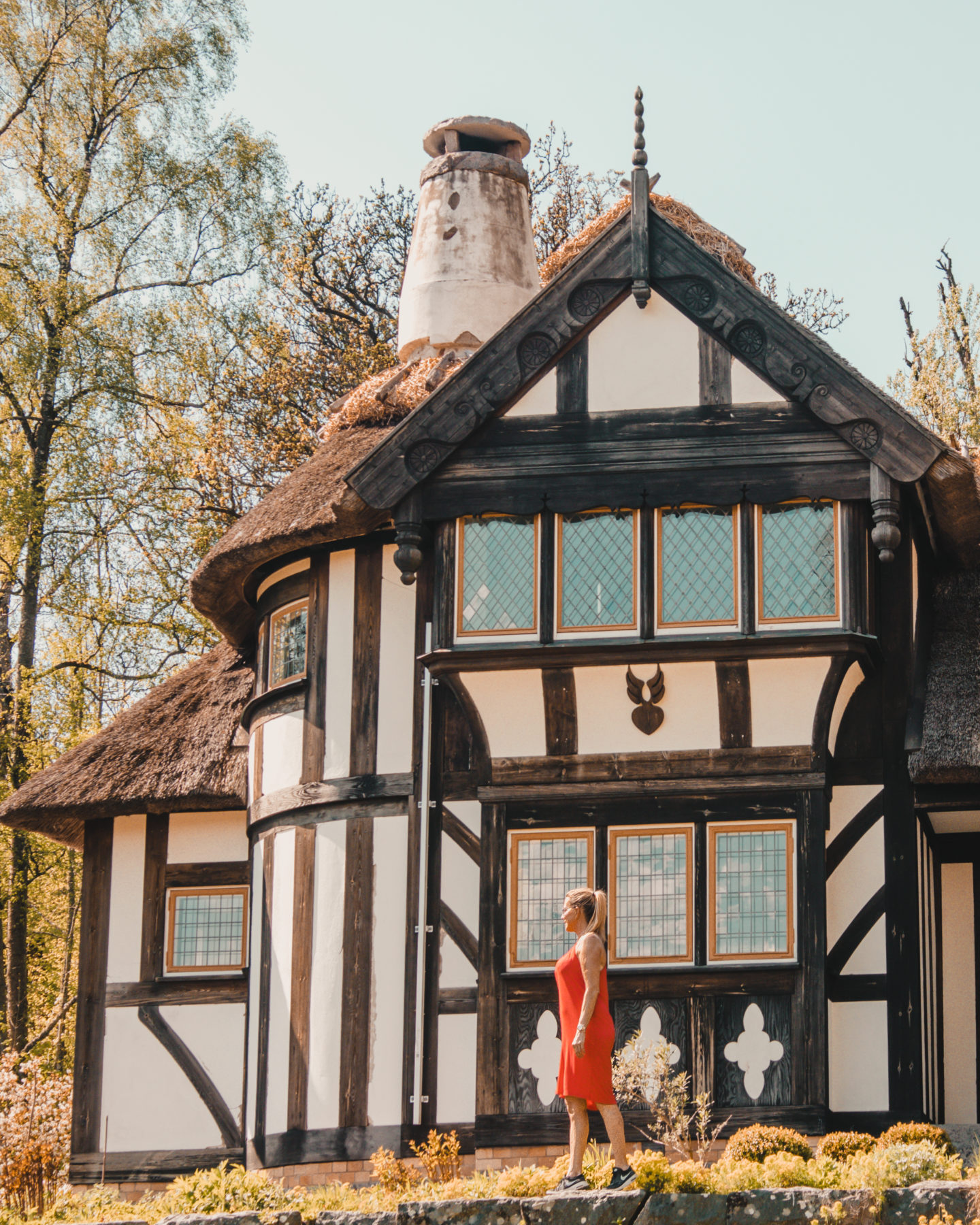

The Worker’s Village
The worker’s village was built in the Swedish “National Romantic” style, surrounded by farming landscape, beaches and coastline. These houses have recently been refurbished, and are now available for rent. Each house has been divided into two apartments, with private entrance and gardens. All include a bedroom with a four-poster bed and traditional Swedish tilled fireplace, a large dining area and fully equipped kitchen with an ornamental wood-burning stove. Sit back and watch the sunset over Kungsbacka fjord. Prices from 1 250 SEK per person, per night.


The Apartment
Tjolöholm estate was built between 1898 and 1904 the lady of the house, Blanche Dickson, included a village for the workers. The village hall functioned as a meeting place, school and library for the workers and their children. On the second floor of this building we have created a charming apartment. There is a large bathroom, with a wooden bathtub for warm candlelit baths. From the apartment you have wonderful views over the surrounding Halland landscape. The next morning, enjoy a fine Swedish breakfast in peace and quiet.

Bookings
Would you like to make a reservation, please contact them on info@tjoloholm.se or +46(0)300-40 46 00.
Public tours take place every day during the summer season, and every weekend the rest of the year. Visitors shown round many of the castle’s 36 rooms. Group tours, in Swedish, English, German or French can be booked year round. The guided tour takes around 45 minutes and are held in Swedish, but the room descriptions are available in English, German and French.
I really love this place it is a total gem and a must visit if. It’s about a 35 40 min drive from Gothenburg.